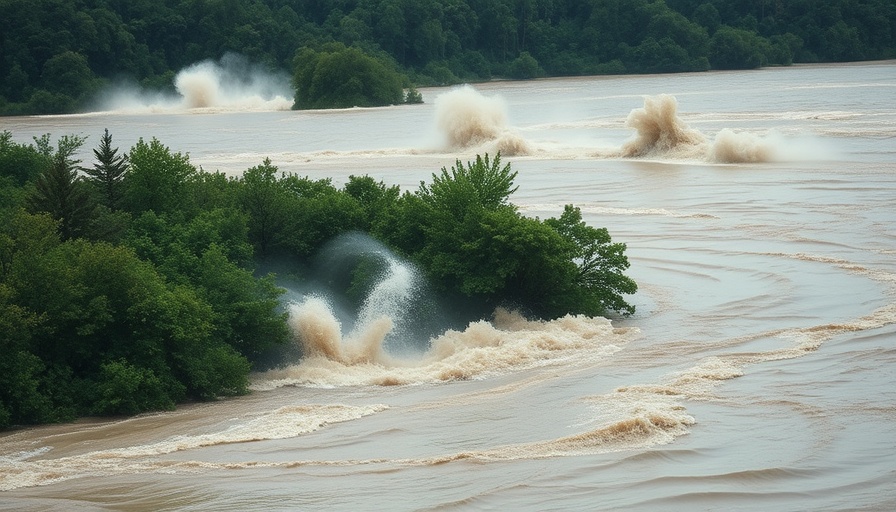
The Tragedy Unfolds
On July 4, 2025, a catastrophic flash flood turned the picturesque Hill Country of Texas into a scene of devastation and despair. As reported by officials, nearly two dozen lives were lost in what has been declared a 'mass casualty event.' The swift and intense flooding along the Guadalupe River caught communities off guard, leading to emergency evacuations and desperate rescue efforts for those trapped in the quickly rising waters.
A Community in Crisis
A significant focus of the rescue operation is Camp Mystic, a children's summer camp, where between 23 to 25 campers are still unaccounted for. The timely alert system failed to forecast the unprecedented rain levels that exacerbated existing conditions. Kerr County Sheriff Larry Leitha confirmed that at least 24 fatalities have been reported, while the Texas Division of Emergency Management scrambled to respond to the emergency, with helicopter evacuations carrying a total of 237 individuals, including 167 airlifted to safety.
Understanding the Flash Floods
The Guadalupe River, normally a tranquil body of water, surged a staggering 26 feet within a mere 45 minutes due to an unexpected weather phenomenon. City Manager Dalton Rice explained how this sudden shift happened—heavy rainfall intensified quickly and converged at critical points, overwhelming the riverbanks and residential areas. The National Weather Service’s estimates of up to 8 inches of rain paled in comparison to the reality of nearly 29 feet at certain points along the river.
The Response Efforts
Officials, including Texas Governor Greg Abbott, are raising concerns over the lack of a robust warning system in the area. Many residents were simply not prepared for the disaster that unfolded on Independence Day. Kerr County Judge Rob Kelly stated, “We had no reason to believe that this was going to be any different than previous storms.” As rescue missions are underway, citizens are left grappling with grief and disbelief.
The Broader Impact
This calamity not only draws attention to the immediate dangers faced by residents in Texas but also prompts broader discussions about climate resilience and emergency preparedness across the nation. Fatalities in such high numbers not only represent a personal loss for families and friends but also serve as a reminder of the unpredictability of nature’s forces.
Moving Forward: Lessons Learned
As recovery efforts commence, the emphasis should be placed on evaluating emergency response systems and public safety protocols. A collective push for improved forecasting technology may also be essential to prevent future tragedies like this one. The loss of young lives at Camp Mystic, in particular, calls for urgent attention to safety measures around children’s camps and recreational activities in flood-prone areas.
Community Solidarity and Future Preparedness
In the aftermath, communities typically come together to support each other, reflecting on what many have lost. Local leaders and residents need to engage in dialogues about preparedness and resilience strategies for the future. To turn tragedy into action, the voices of those affected must be at the forefront of the discussions. The time to advocate for systemic changes is now, to prevent loss of life in the new flood-resistant era.
 Add Element
Add Element  Add Row
Add Row 



Write A Comment